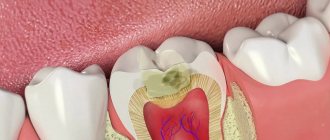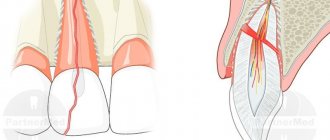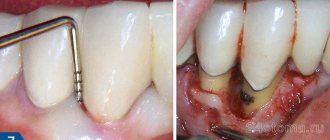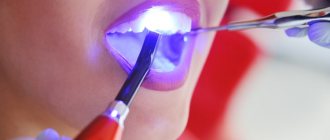Memo to the patient after caries treatment and dental filling.
Today, modern filling materials can last for decades – they are so durable and aesthetically pleasing. However, the service life largely depends not only on professional treatment, but also on the attitude of the patient himself - it is important to have professional teeth cleaning at least once a year, as well as follow some simple recommendations to ensure that the filling lasts as long as possible.
If the filling creates discomfort after treatment
Even in the dental office, after placing the filling, be sure to make sure that the restored tooth does not interfere, i.e. does not overestimate the bite (to do this, you need to create chewing movements of the lower jaw forward and backward, sideways, carefully close your teeth). The filling should not be felt or change the bite. There is no need to be embarrassed to talk about this discomfort to your doctor - sometimes the final stage of filling treatment can take even more time than preparing carious cavities and applying filling material, because The doctor’s main goal is to create multiple contact points between the filled tooth and the antagonist and in no case “turn off” the filling from the bite because this is fraught with changes in the temporomandibular joint.
After treatment, local anesthesia wears off within 1.5-2 hours. If a conductor type was used, then after 4-6 hours. Then you begin to fully feel the restored tooth, you can fully close your jaws and understand how comfortable you are after the treatment.
If you experience a little discomfort, you feel like the tooth is a little higher and your jaw isn't closing quite tightly - this is normal. The fact is that now you have been given a new filling in accordance with the bite, that is, with the shape and position of the antagonist tooth located on the opposite side. Therefore, if there is no sharp pain, be patient for a few days. If the situation normalizes and you get used to it, then there is no reason to see a doctor. If discomfort persists for 1-2 weeks, you should visit your dentist to have the filling corrected.
What to do if your teeth hurt after filling
At Dr. Martin's dentistry, treatment for pain in a filled tooth begins with diagnosis. The most informative method is an x-ray. All processes occurring inside the canals and other areas of the tooth will be reflected in the image.
When pathological processes are confirmed, the tooth is depressurized. The filling is removed, the root canals are re-cleaned and proper treatment is carried out. If the instrument breaks, the foreign object is removed using special devices.
In each case, the manipulation scheme is determined individually. Treatment ends with re-filling and restoration of the dental crown. The dentist may prescribe medication to prevent or eliminate the inflammatory process. A follow-up visit is required to take a control x-ray.
How much should you not eat after getting a filling?
If a filling made of chemical composites is installed, then you should refrain from eating and drinking for 2 hours. This is due to the fact that the material requires a certain time for final hardening.
If a “light” composite filling is placed, you can drink immediately, but you should abstain from food for 1.5-2 hours. But the reason is not in the material (it hardens a few seconds after applying and polymerizing a special lamp), but in anesthesia - with reduced sensitivity of the mucous membranes during eating, you can injure the mucous membranes of the cheeks and lips.
During the day after the filling is installed, you should only consume foods that are temperature-neutral - excessively hot or cold foods can lead to deformation of the filling. It is necessary to chew food on the opposite side for the first day - this will allow the material to fully “adhere” to the tooth tissues, without the risk of damage.
Tooth dislocation in a child
Luxation of a baby tooth is a common injury in children 1-3 years old. Children often fall when hit by hard objects. The symptoms are not fundamentally different from those in adults. The most dangerous is an impacted luxation of a baby tooth, since this can lead to destruction of the dental bottom, which in the future will prevent the normal development of a permanent tooth. If an accident does happen to a child, you cannot set the tooth yourself - there is a high risk of causing even greater injury. You should contact the dentist.
If your tooth hurts after getting a filling
Minor pain may persist for several days or even a couple of weeks, which is explained by overheating of the tissue due to the use of boron, and therefore the preparation is usually carried out with cooling with water. In some situations, for example, with deep caries or when treating front teeth, increased sensitivity can persist even for several months. But in such a situation, you should still consult a doctor for an x-ray to make sure that there is no infected tissue left under the filling and that inflammation has not affected the nerve.
What helps with toothache after dental treatment?
In any case, you should visit your dentist and discuss the problem together. Depending on the specific situation, he can decide whether a new tooth filling is necessary (possibly with a different filling material) or whether a crown should be installed instead, which, however, usually requires re-preparing the tooth and entails additional costs.
Taking painkillers with paracetamol or ibuprofen helps with acute pain that has no apparent cause. Patients should ask their dentist about a suitable medication immediately after treatment and take it in cases of toothache.
In case of swelling that occurs after root canal treatment, it is necessary to cool the affected area from the outside. A cold compress or wet gauze chilled in the refrigerator can relieve pain and help reduce swelling more quickly. However, a strong cold irritant can also aggravate toothache, especially with deep fillings; in addition, the sensitive dental nerve can be irritated.
Much safer are proven home remedies, such as chamomile or mint tea, which are used to thoroughly rinse the affected areas. Clove or tea tree oil has an analgesic and disinfectant effect and can relieve pain.
But, in any case, it is important to understand the cause of pain and not self-medicate without the advice of a specialist. If you have any concerns or discomfort, you should immediately seek advice from a professional dentist. Call APOLLONIA Dental Clinic and we will help solve any of your dental problems.
Can my gums hurt after filling?
The gums in the area where the anesthesia was administered may ache for several days - this is completely normal and does not require any measures. The mucous membrane may also be slightly inflamed if special rings or matrices were used during treatment, which are placed on the tooth to form the correct shape of its crown and create ideal interdental contact. The gums can also be damaged if the doctor applied the filling material in close proximity to the mucous membrane or even under it - in such a situation, the gums are deliberately moved back, the gums are retracted with a special thread or coagulated. Therefore, pain is a normal reaction to external intervention.
All of these conditions are variations of the norm. But if the pain intensifies, redness and swelling of the mucous membrane progresses, you need to consult a doctor.
How to properly perform hygiene procedures
After treatment, brush the filled tooth carefully, applying minimal pressure to it. Do not use rinses containing abrasive substances and alcohol, which can increase the plasticity of the material - this will lead to a change in the shape of the filling. Also, do not use overly hard brushes - they can leave microcracks in the material, which will not have the best effect on the durability of the filling.
In general, you should take care of teeth with fillings in a completely standard way:
- daily brushing of teeth twice a day - in the morning after breakfast and in the evening after all meals, after - rinsing the mouth with water and rinse,
- To clean the area of filled teeth after eating, it is better to replace dental floss with an irrigator. If you floss (thread) carelessly, you can touch the installed filling, especially if there are thin edges of the tooth, which will lead to its chipping or loss.
Symptoms and types of tooth dislocation
- Incomplete tooth dislocation. The dental crown is shifted forward, backward, sideways or rotated around its axis. The tooth is loose, but continues to stay in the socket. Touching it causes severe pain. Often the patient cannot close his teeth because the injured crown prevents him from doing so. The gum tissue is separated from the surface of the tooth and the gap between them bleeds. The gums are swollen and have acquired a darker shade. Such a dislocation can be complicated by destruction of the pulp (the internal cavity of the tooth with nerves and vessels), pathological changes in the root (curvature, shortening, and in children - cessation of growth).
- Complete tooth dislocation . The crown completely falls out of the dentition, its tissues are separated from the gums. In its place, a bleeding hole forms, the gums swell and become bluish. Complete tooth dislocation in children most often occurs on baby teeth, as they are less strong.
- Impacted tooth dislocation. The crown is partially or even completely submerged in the gum tissue, which also swells and bleeds. This situation is dangerous due to fragmentation of the root, destruction of the pulp, and rupture of the blood supplying vessels. An impacted dislocation of a baby tooth in a child can negatively affect the formation of a permanent tooth, so it is necessary to visit a dentist.
Is it necessary to follow a diet after caries treatment?
From the diet as a whole after caries treatment (especially if a large filling is installed and your own tooth has very thin walls), it is recommended to remove too hard foods - toffees, chewing gum, grilled fruit, nuts, etc. Or chew them with teeth located on the opposite side (if they do not have fillings).
Minimize the amount of consumed foods and drinks that contain coloring pigments (tea, coffee, beets) - under their influence, the filling material may slightly change its shade. This rule is especially relevant when restoring front teeth.
How to maintain your treatment guarantee
To maintain the guarantee, the patient must strictly follow all recommendations: do not overload the tooth, do not use it for other purposes (for example, opening beer bottles, biting off threads), and also regularly see the doctor in accordance with the individual schedule of medical examinations, approximately once every six months. Unfortunately, many patients forget about this, and it is the last point that is the key to maintaining the guarantee for treatment.
You need to visit a doctor 1-2 times a year. During a preventive examination, the dentist will be able to make sure that the filling is in good condition, and that secondary caries does not develop again under it.
Check yourself: when to see a doctor
If a tooth hurts 2-3 days after the filling is placed, and the pain noticeably intensifies when pressed at night, this may indicate a relapse of caries and damage to the dental nerve. If black spots are visible under the filling several months after treatment, the filling interferes with the closure of the jaws or there is prolonged pain when pressing on the tooth. Do not ignore these symptoms and do not be afraid - this is a reason to contact your attending physician - all work must be carried out within the framework of the guarantee of the medical institution. Timely treatment is the key to the health of your teeth!
Stages of canal filling
First of all, the doctor carries out an examination and the necessary diagnostic operations, which may include, for example, an X-ray examination of the oral cavity.
If suspicions about the need to fill the canal are confirmed, the dentist carries out preparatory manipulations. First of all, adequate anesthesia. After it has taken effect, the caries-affected tissue is removed using a burr. The dental nerve is then removed. Next, the doctor is engaged in mechanical processing of the endodont - a complex of dental tissues, including pulp and dentin.
Upon completion of the preparatory stage, the empty root canal is filled, then a permanent filling or crown is installed.










